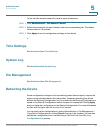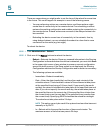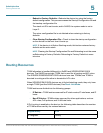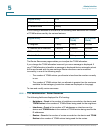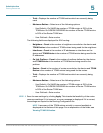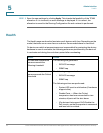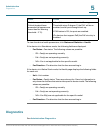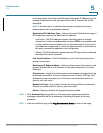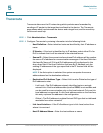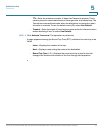
Administration
Ping
Cisco Small Business 200, 300 and 500 Series Managed Switch Administration Guide (Internal Version) 73
5
in this drop-down field. If the Host Definition field was By IP Address, only the
existing IP addresses of the type specified in the IP Version field will be
displayed.
NOTE If the Auto option is selected, the system computes the source
address based on the destination address.
• Destination IPv6 Address Type—Select Link Local or Global as the type of
IPv6 address to enter as the destination IP address.
- Link Local—The IPv6 address uniquely identifies hosts on a single
network link. A link local address has a prefix of FE80, is not routable, and
can be used for communication only on the local network. Only one link
local address is supported. If a link local address exists on the interface,
this entry replaces the address in the configuration.
- Global—The IPv6 address is a global Unicast IPV6 type that is visible and
reachable from other networks.
• Link Local Interface—If the IPv6 address type is Link Local, select from
where it is received.
• Destination IP Address/Name—Address or host name of the device to be
pinged. Whether this is an IP address or host name depends on the Host
Definition.
• Ping Interval—Length of time the system waits between ping packets. Ping
is repeated the number of times configured in the "Number of Pings" field,
whether the ping succeeds or not. Choose to use the default interval or
specify your own value.
• Number of Pings—The number of times the ping operation is performed.
Choose to use the default or specify your own value.
• Status—Displays whether the ping succeeded or failed.
STEP 3 Click Activate Ping to ping the host. The ping status appears and another
message is added to the list of messages, indicating the result of the ping
operation.
STEP 4 View the results of ping in the Ping Counters and Status section of the page.



